Resonant Chamber
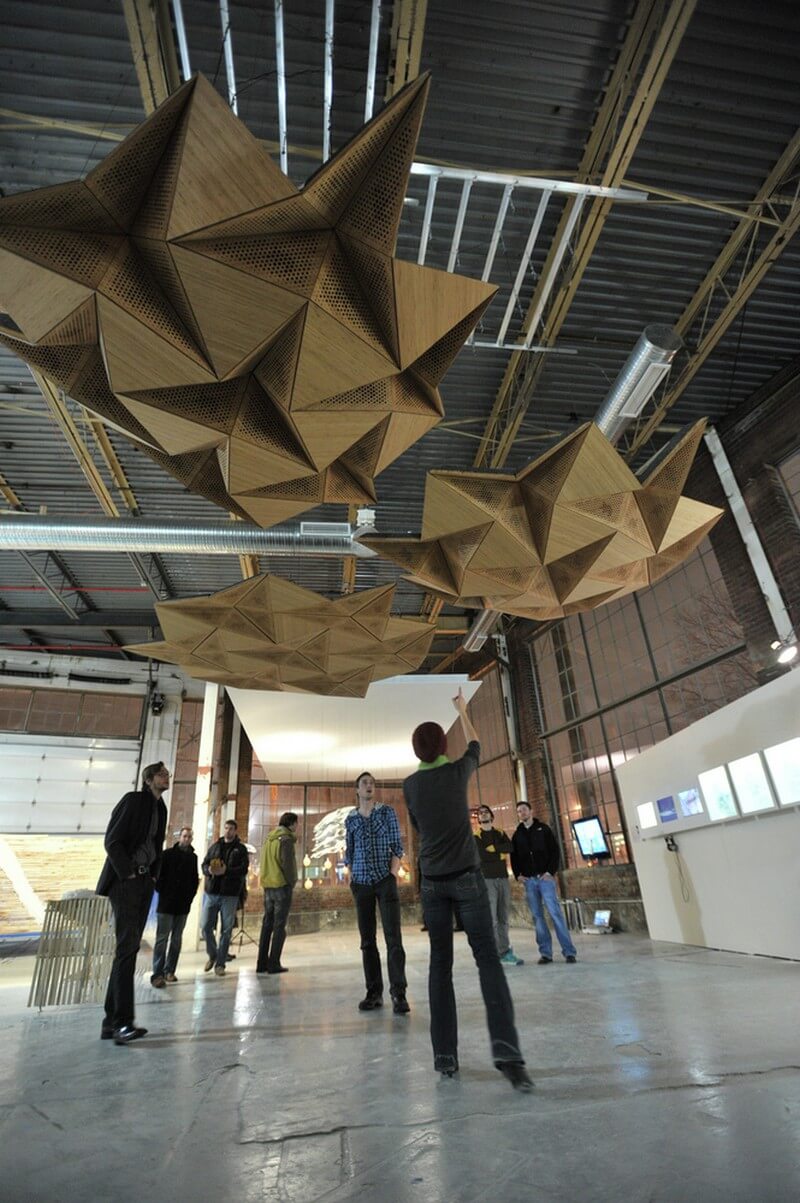
Resonant Chamber, an interior envelope system that deploys the principles of rigid origami, transforms the acoustic environment through dynamic spatial, material and electro-acoustic technologies. The aim of rvtr is to develop a soundsphere able to adjust its properties in response to changing sonic conditions, altering the sound of a space during performance and creating an instrument at the scale of architecture, flexible enough that it might be capable of being played.
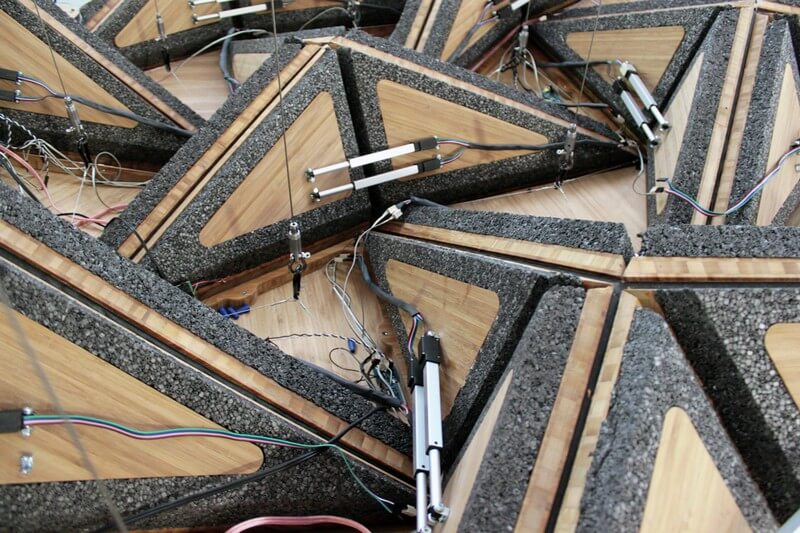
The project is developed through three streams of iterative research and development in both computational testing and full-scale prototype installation: Dynamic Surface Geometries; Performative Material Systems; and Variable Actuation and Response. The faceted acoustic surface is comprised of the composite assembly of reflective, absorbtive and electroacoutsic panels, clustered around an electronics panel that contains circuit controls for linear actuation, electro-acoustic amplification of the distributed mode loudspeaker (DML) embedded speakers and a set of sensing inputs.
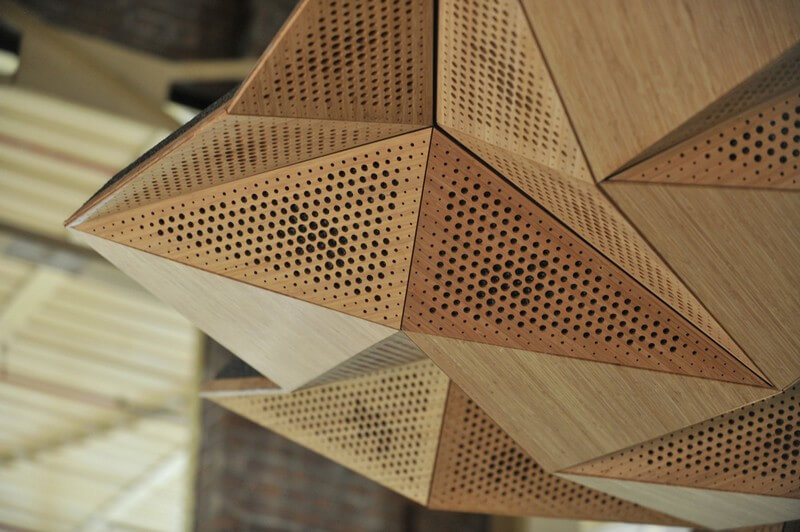
A single electronics panel may contain enough processing to control four DML speakers, local sensing of acoustic pressure and three sets of linear actuators which in turn controls three flat-folding cells. Actuation and geometric configurations was predictively modeled in Rhinoceros 4.0 and its plug in Grasshopper and add on Kangaroo to script and simulate the physical relationship between vertices and applied forces.
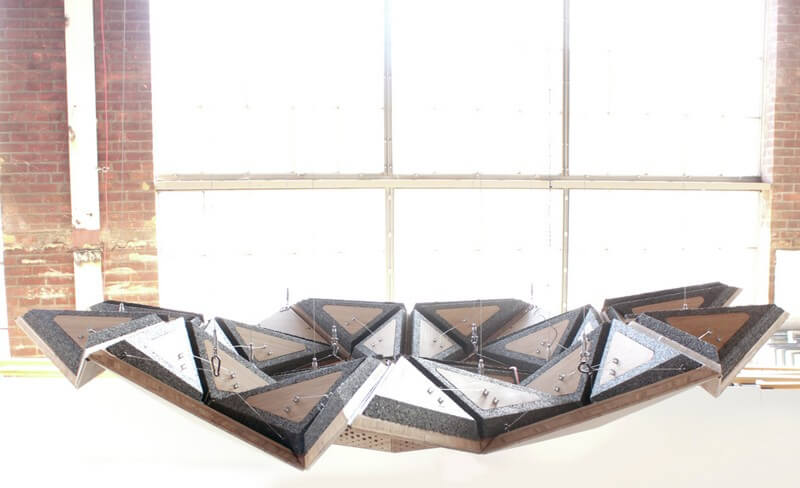
Simulations allowed the models to learn how to predictively arrange panels into optimum acoustic variations based on input constraints such as reverberation time, absorption coefficient, directional amplification and early/late acoustic response. When the physical envelope is deployed within a bounding space, this same software can translate predictive modeling into optimized measured lengths of displacement for actuation within the digital model to PWM signals actuating the system’s kinetic components and positioning its tessellated surface.
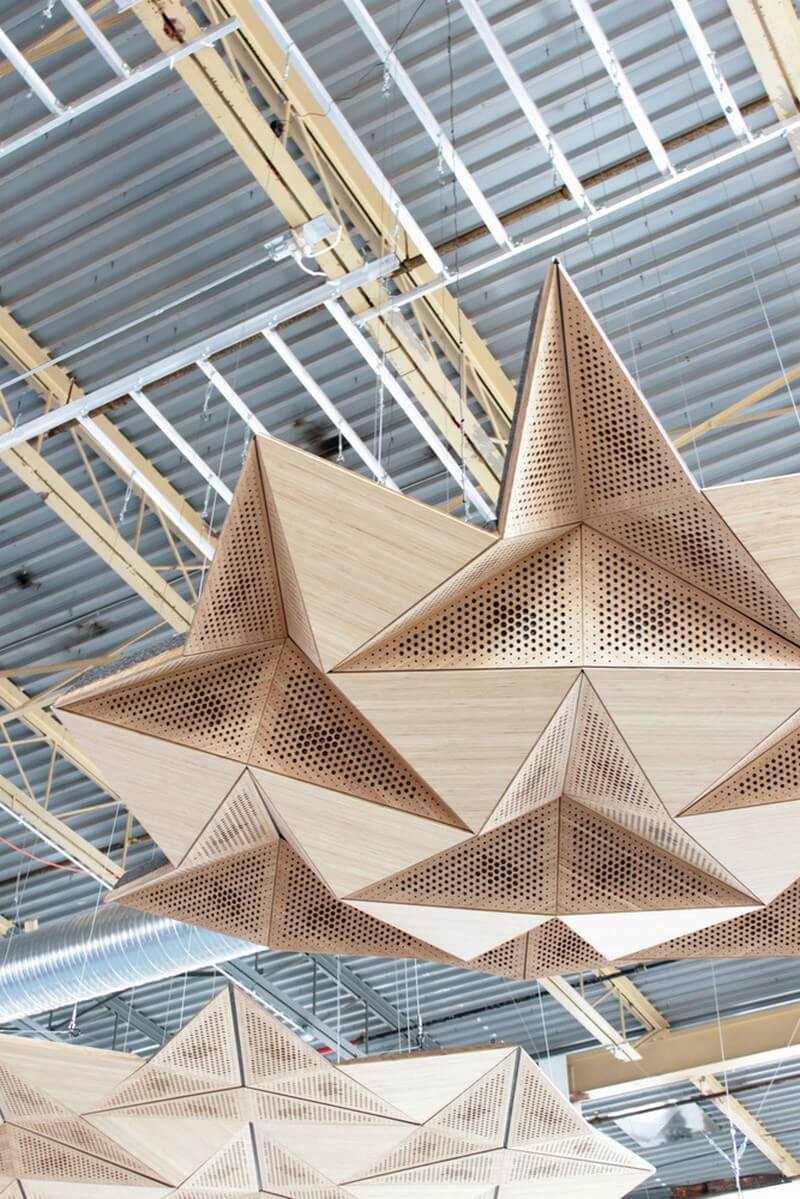
The flat-folding attribute of rigid origami allows the change of exposed surface properties of the operating envelope with a predictive number of DOF. These flat-folding cells are geometrically translated by linear actuators mounted parallel to the top of the panel. The linear actuators are controlled through the PWM signal to control the fold angle resulting in a proportion of exposed surface.
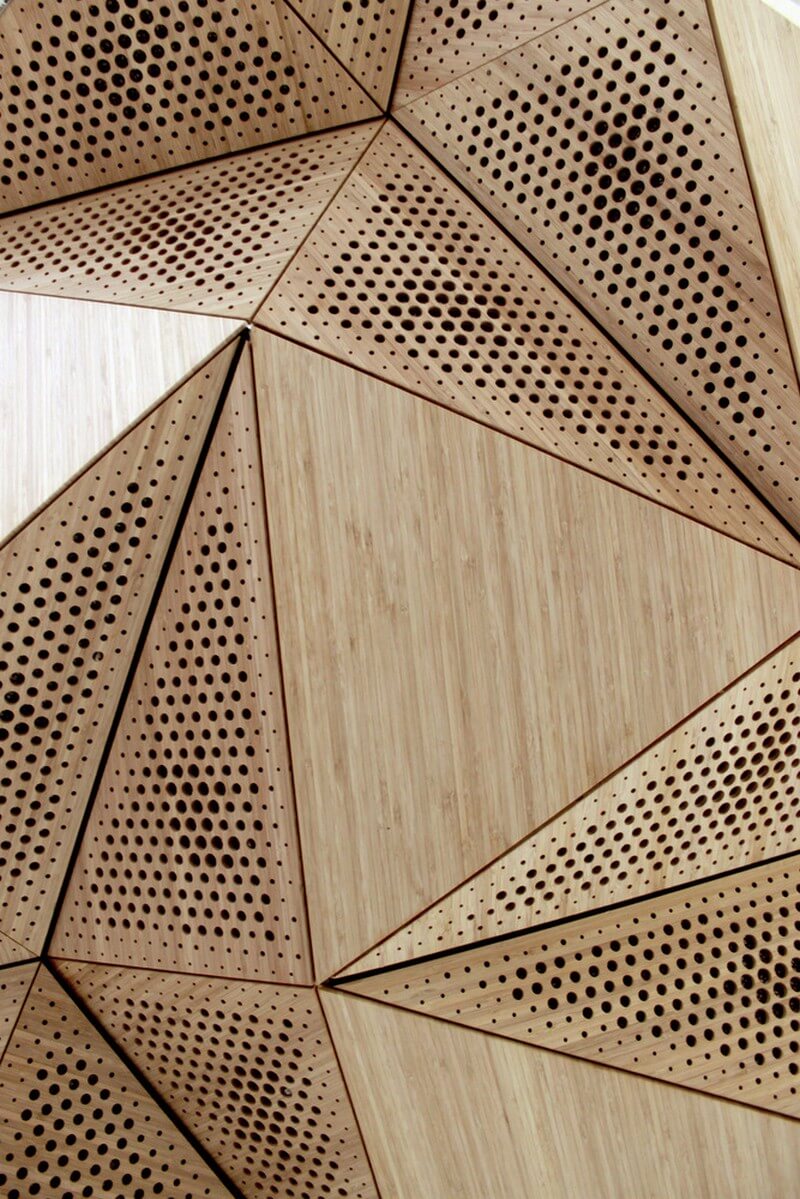
This approach offers the capacity to modify aesthetic form while simultaneously manipulating the acoustics of a space. The DOF in the system allow for a limited (versus serial) number of actuation points to be coordinated across the continuous surface resulting in customized transformations based on input criteria of acoustic optimization.
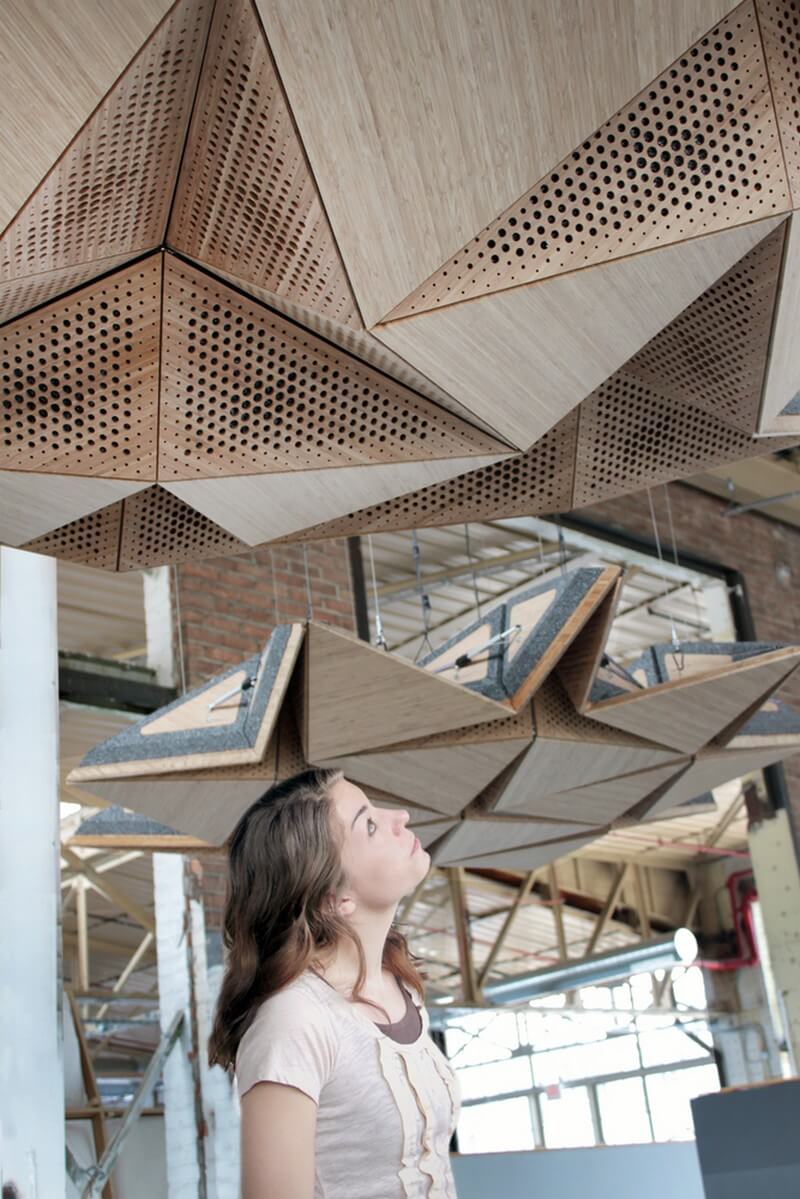
Three types of composite panels have been developed: reflective, absorptive and sound generating (via electro-acoustics) in collaboration with consultants at Arup Acoustics who undertook rigorous material based digital acoustic simulations as well as scaled physical panel prototype testing to determine optimal geometry and material characteristics relative to their acoustic performance when combined within the geometric configurations proposed.
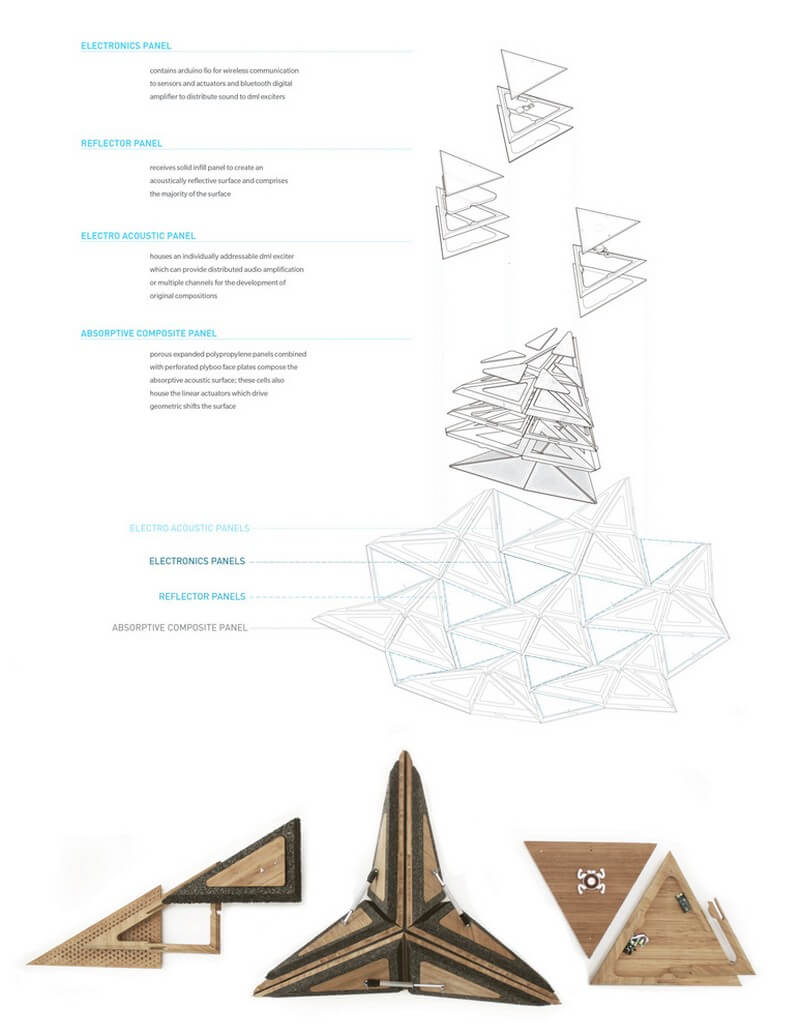




























Comments